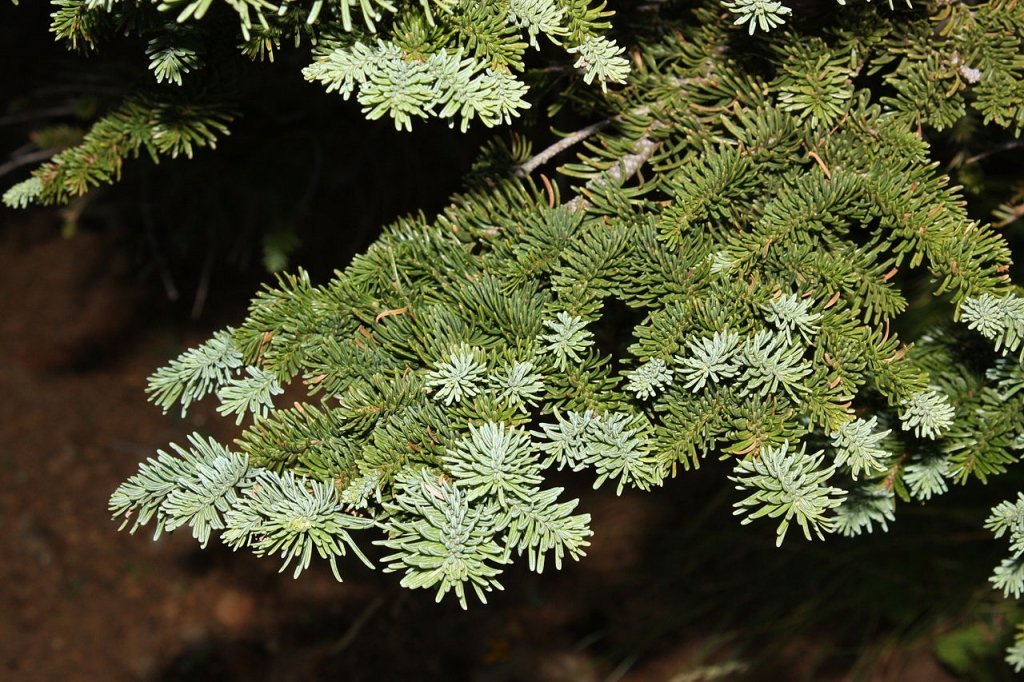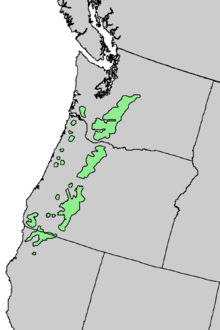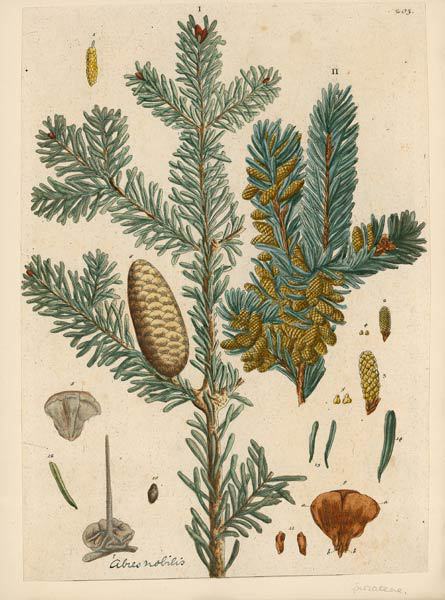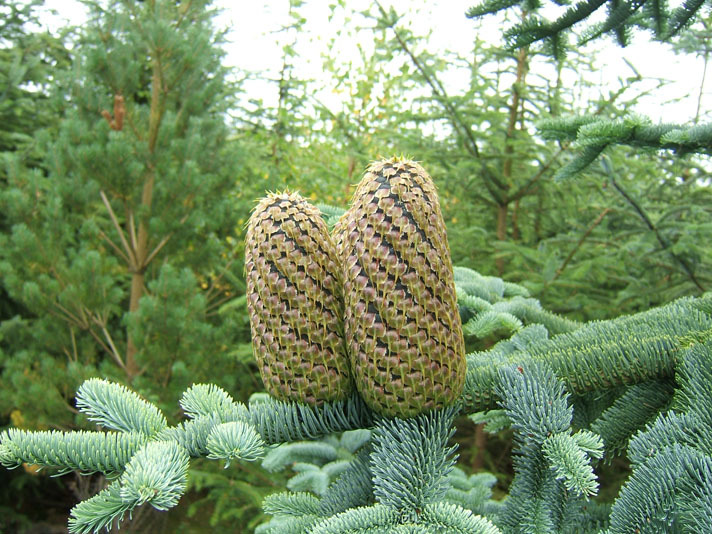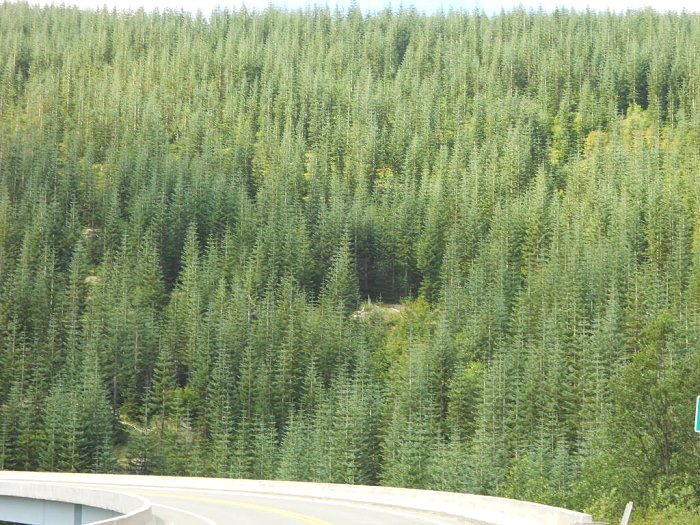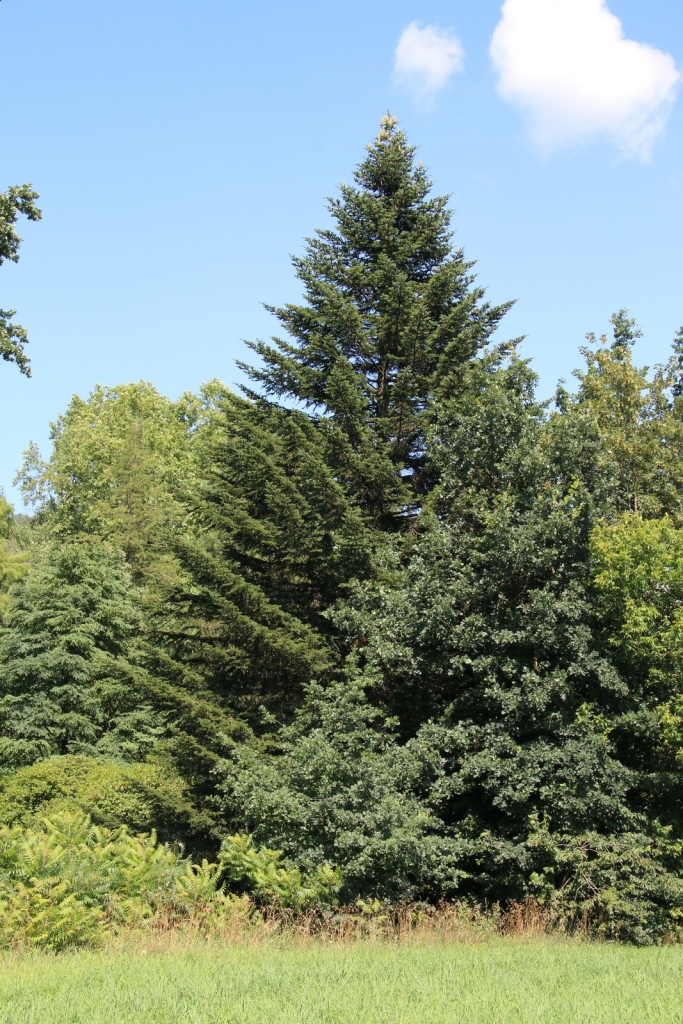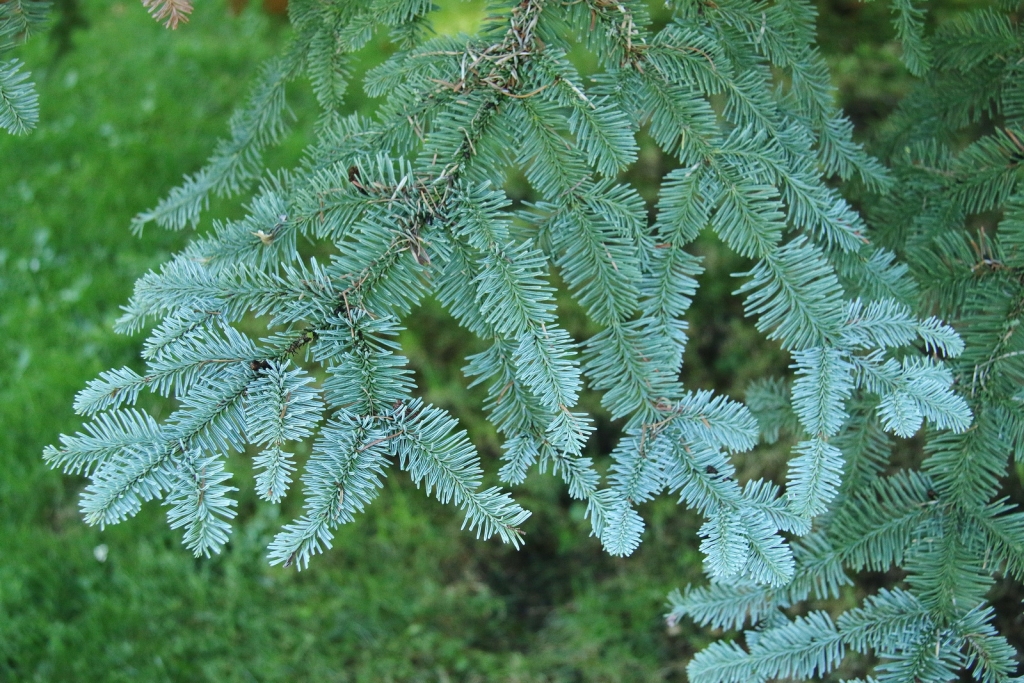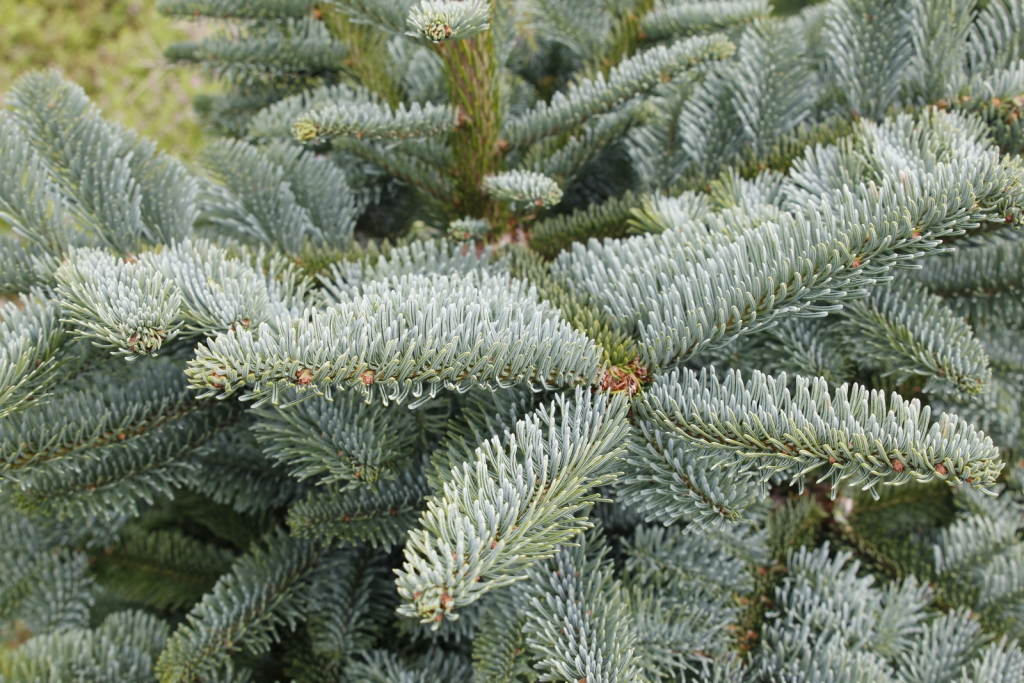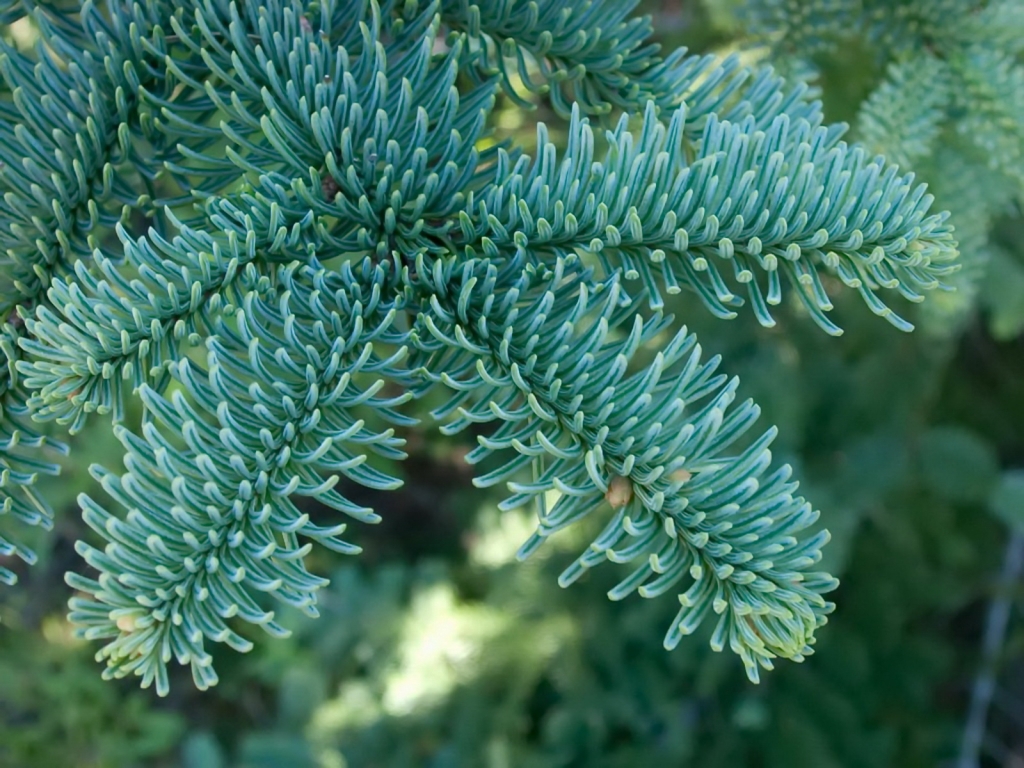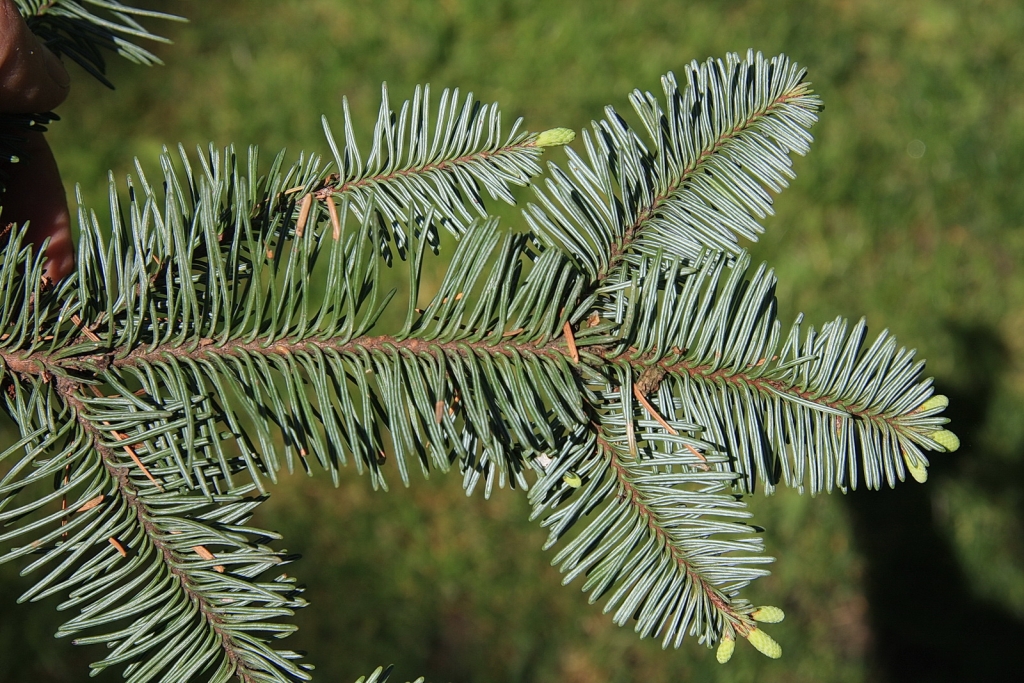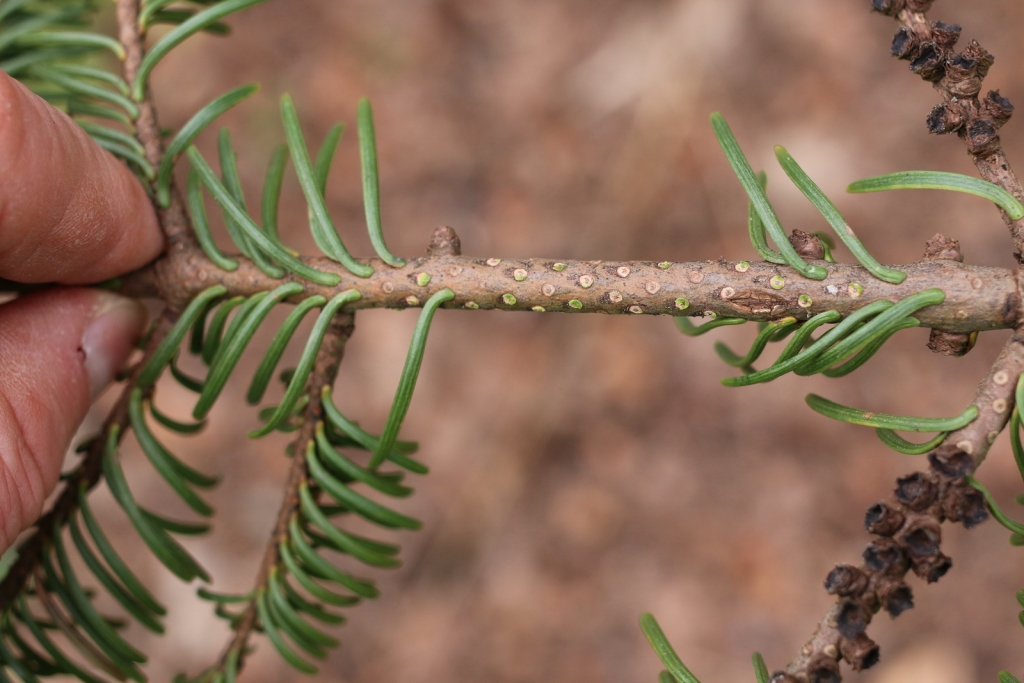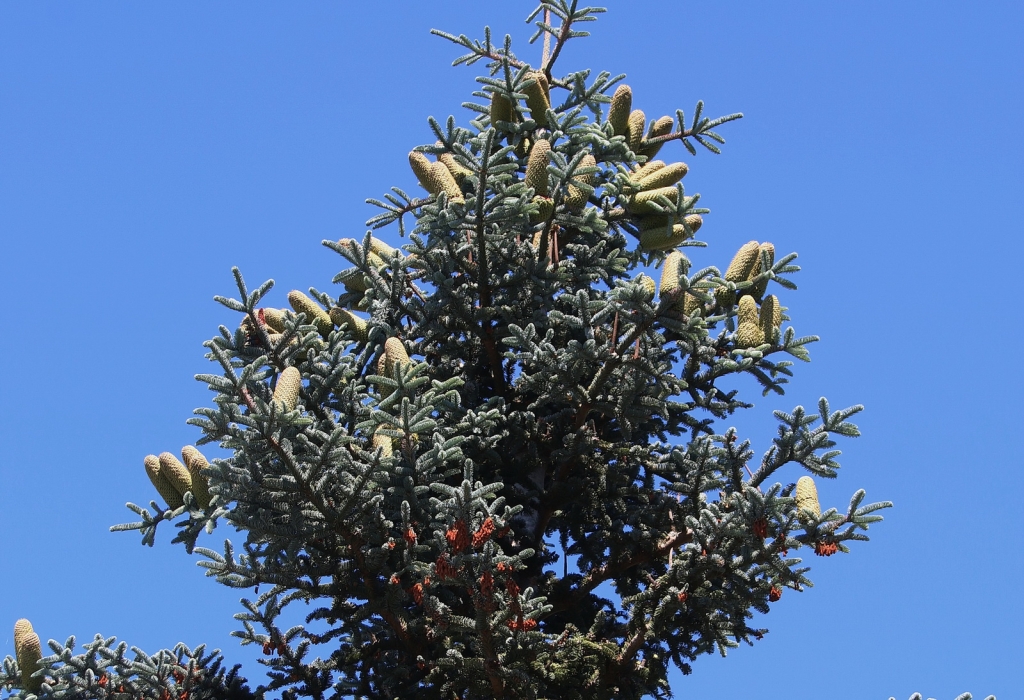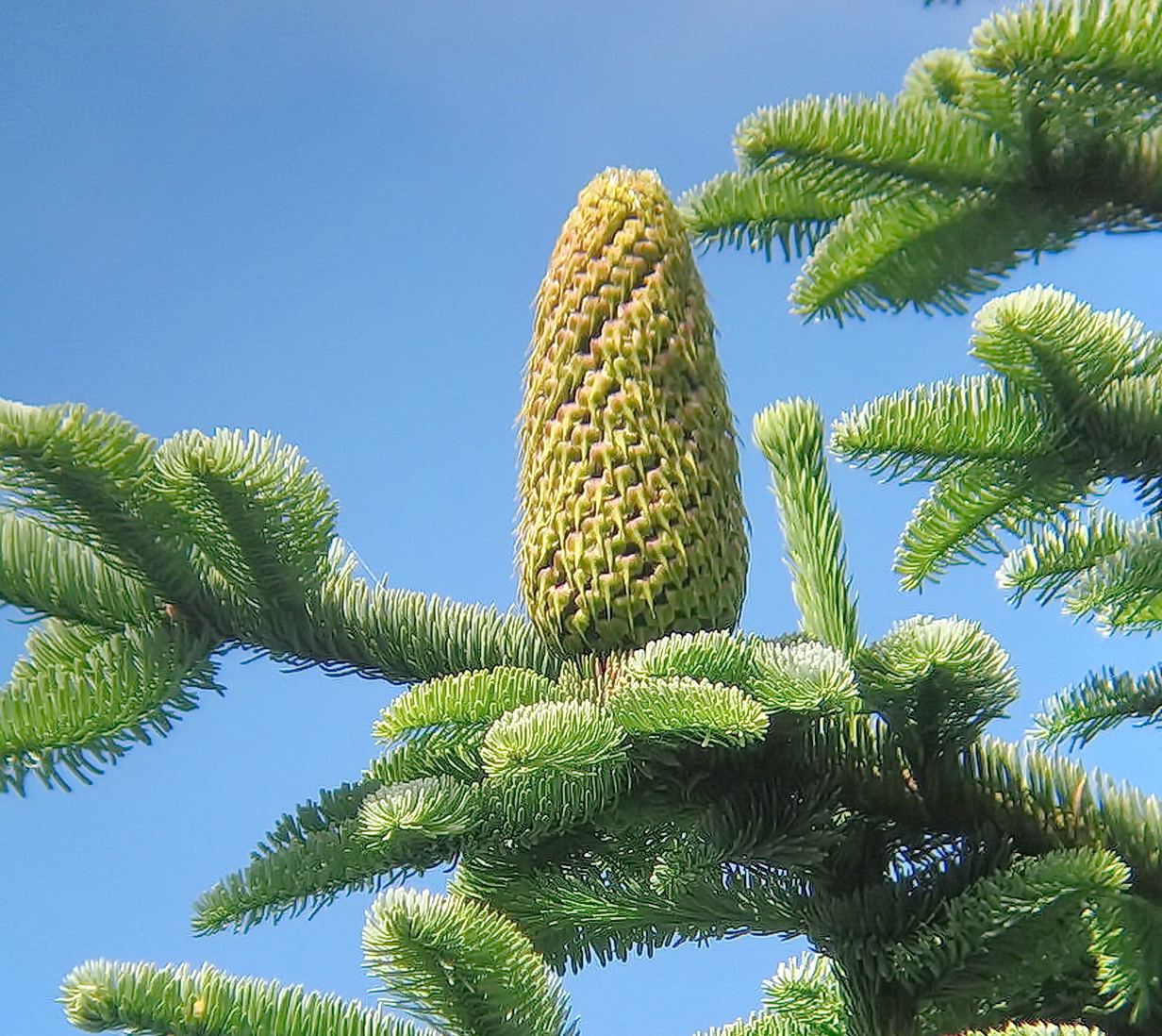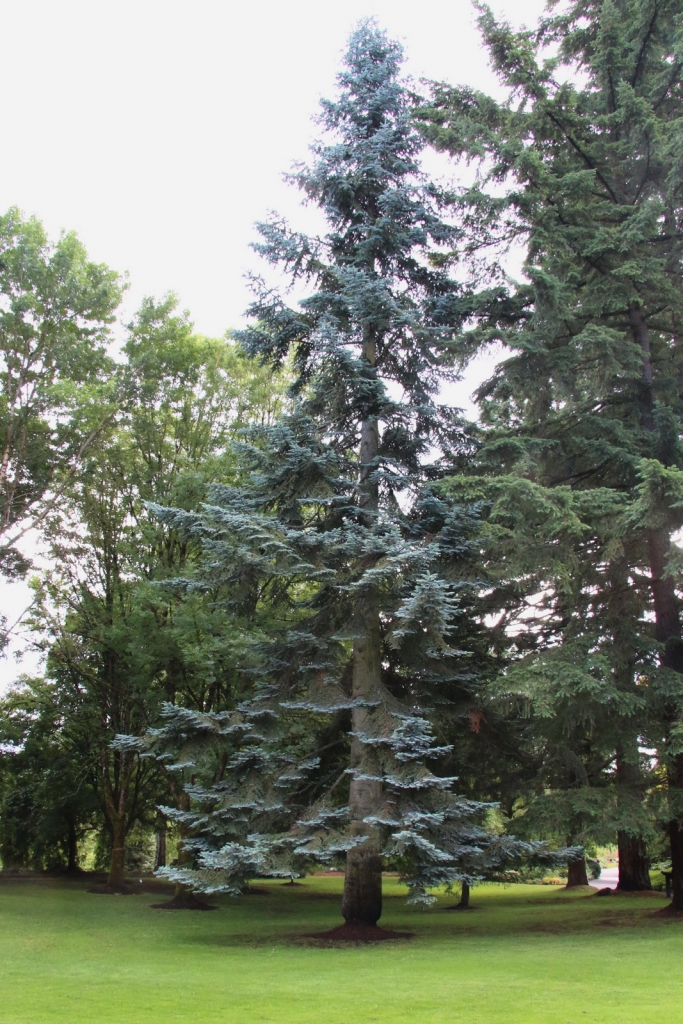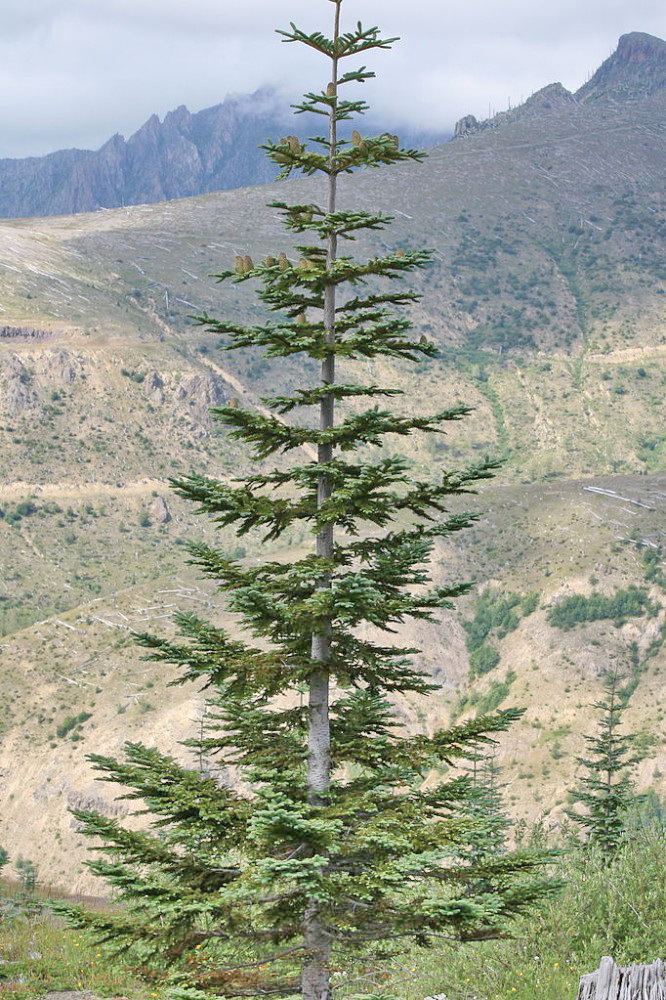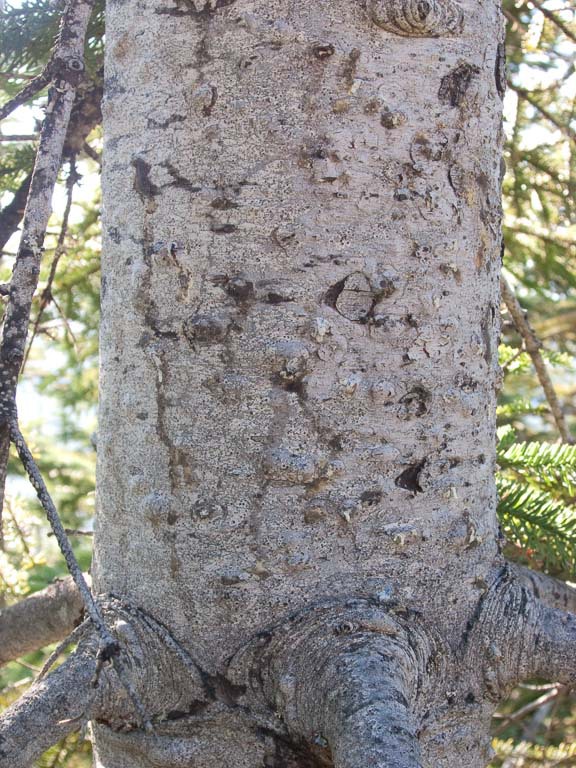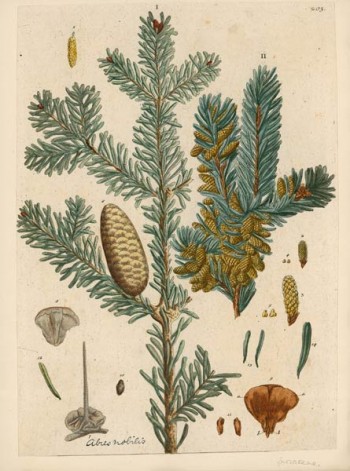
Abies procera, as described in 1940 by Alfred Rehder (1863-1949), in Rhodora no.42, is commonly known as Noble fir. It is American's largest fir, which explains its species name which is Latin for "tall."
According to William Critchfield (1988), it is notable that A. procera hybridizes extensively with A. magnifica in northern California and southern Oregon; see discussion under Abies magnifica. Given that Abies grandis also hybridizes with A. concolor var. lowiana in the same area, field identification of firs in that part of the world is quite the problematic task.
Ethnobotany. The wood was formerly used for airplanes and ladders, in both cases because it is light, strong and can be bent far before breaking. It is still regarded as one of the best true firs for lumber due to the strength of the clear, lightly grained wood.
Description. Noble fir is an evergreen coniferous species of tree which grows to mature heights of 130 to 230 feet (40 - 70 m), with a 6.5 foot (2 m) diameter trunk, measured at breast height; exceptionally growing to 295 feet (90 m) tall and 8.9 feet (2.7 m) in diameter, with a narrow conic crown.
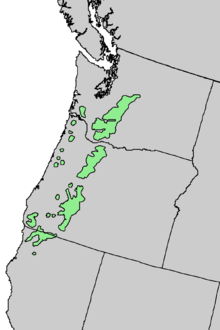
Abies procera is very closely related to Red fir (Abies magnifica), which replaces it farther southeast in southernmost Oregon and California, being best distinguished by the leaves having a groove along the midrib on the upper side; Red fir does not show this. Red fir also tends to have leaves that less closely packed, with the shoot bark visible between the leaves, whereas the shoot is largely hidden in Noble fir. Red fir seed cones also mostly have shorter bracts, except in Abies × shastensis; a hybrid of Noble fir and Red fir.
Distribution. This species is native to the Cascade Range and Coast Range mountains of extreme northwest California and western Oregon and Washington. It is a high altitude tree, typically occurring at elevations of 980 to 4,920 feet (300 - 1,500 m) above sea level, only rarely reaching tree line.
Hardy to Zone 5 - cold hardiness limit between -20° and -10°F (-28.8°C and -23.3°C).
